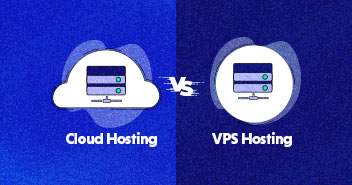
There’s a phenomenon where a lot of businesses are migrating to cloud computing. The question, however, pertains to why move to the cloud? So here’s our take on cloud migrating benefits and some cloud migration strategies. We’ve covered it all whether you’re opting for cloud to cloud or shared to cloud migration.
When the web-based applications started, the app architecture was so simple that multiple apps could be easily hosted on a shared server, without any significant compromises on performance. However, as the number of users and the internal complexity of the apps increased, shared hosting started to fail and thus the businesses migrated their apps to dedicated VPS hosting solutions that we’re able to provide the resources and ensure baseline performance.
Don’t Let These Mistakes Fail Your Startup
Learn from the most common mistakes that contribute to startup failures and avoid them right away.
Things were not suitable for long, and VPS/dedicated hosting solutions also started to fail the users. Business owners had no option but to purchase an entire dedicated server. The first challenge they face was the migration of the application to the new VPS server. Despite the performance, businesses soon realized that the massive cost of the server was not worth it. Most of the time, a significant portion of server resources were left idle. Since the businesses were paying for the entire server regardless of resource utilization, the dedicated server proved to be a wrong business decision.
This prompts businesses to opt for a solution as cloud migration benefits.
What is Cloud Migration?
Cloud migration is the process through which companies shift their application and server to a cloud-based hosting provider. There are many advantages to companies on the topic of why they move to the cloud. For one, they don’t have to worry about wasting time when scaling server resources. Secondly, the cost of a cloud-based solution is more budget-friendly and unlike shared hosting, other users on the same physical server (if this is the case), don’t directly impact your server and application performance.

When a user migrates to cloud computing, the web application tend to make good use of cloud hosting capabilities and resources. So, in a nutshell, there are reasons to move to the cloud. Cloud migration simplifies the process of setting up applications that users can interact directly within their browsers instead of downloading them to their devices.
Types of Cloud Migration
Migrating to cloud computing can intimidate a lot of first-timers due to cloud migration problems. There are several similar-sounding options with differences that are not readily apparent generally. To make things easier for the users, here are the significant types of cloud migration options:
i. IaaS Cloud Migration
In IaaS cloud migration, the server is moved from a local or shared hosting server to a dedicated cloud server. Post-migration, data, and application must function as intended on the new IaaS server. The migration can often take longer than expected and is usually undertaken by developers because of the complexity of data dependencies and application functionality.
ii. PaaS Cloud Migration
Migration to a PaaS Cloud solution is not as complicated since the solution’s primary purpose is to make the process easier for all users. The assumption here is that business owners don’t have the technical expertise to handle the process of migration to the cloud. This is accomplished through a browser-based UI/portal that facilitates the migration process. While a user with moderate technical knowledge can initiate the PaaS cloud migration process, the chances of issues during the process are still there.
iii. SaaS Cloud Migration
Migrating to a SaaS Cloud solution can take up time, as the process of moving from local or shared hosting to the SaaS cloud happens in phases. The first part of the process usually comprises of setting up the basic structure of the application. Once the developers make sure that everything is working correctly, the addons and supporting components are moved on to the SaaS server.
To know more about the differences between IaaS, PaaS, and SaaS, you can read this detailed post comparing the three.

Cloud Migration Benefits
Cloud migrating benefits your application by opening a horizon of new possibilities for high-level architecture applications that gather and process data in realtime. Properly deployed cloud migration strategies ensure a smooth cloud migration experience and hassle-free post-migration performance.
i. Scalable Resources
The most visible benefit of cloud migration is the inherent feature of flexible server resources. This is the main reason why applications that require varying levels of server resources opt for the scalable server solutions offered by cloud hosting solutions.
ii. Cost Reduction
In an era when the competition has become fierce, every business is looking for cost-effective solutions to remain profitable. Cloud migration helps companies to reduce both operational and capital expenses simply because of the Pay-As-You-Go billing model that is ideal for businesses who now have to pay only for the resources their server consumes.
iii. Mobility
Since a cloud server is accessible from anywhere, users experience the versatility of access and ease of use like none other. IP whitelisting feature ensures the authorization of the user to access the server from any part of the world regardless of device. This function is commonly available in all PaaS cloud services, such as Cloudways.
iv. Automation
A known cloud migration problem is to keep the backend server API’s updated. When it comes to (managed) cloud migration, application management team do not have to worry about API and application update.
v. Flexible Operations
Cloud Solution allows organizations to deploy and test applications quickly over the cloud. Instead of manually using the application, the development teams can deploy the applications through automated deployment options without worrying about compatibility and performance issues.
vi. Secure Storage Options
Organization prefers to go for cloud migration because of the very secure storage that is available at a very reasonable operational cost. Besides, when the need arises, the room can be easily scaled up or down without disrupting the application usage. This is an excellent feature for businesses with seasonal or periodic data storage requirements.
Why Businesses Opt for Cloud Migration?
Businesses opt for migration to cloud simply because of the following operational challenges and requirements:
- Traffic spikes and the inability to scale server resources to deal with sudden operational demands.
- High operational costs and ineffective processes
- Data storage requirements
- The challenges that come with a geographically distributed team that need access to application-related methods
- The prices of an in-house disaster recovery process
Process of Cloud Migration
While the cloud migration process differs from vendor to vendor, the core process of moving to the cloud remains the same. What changes are the operational requirements and actual suite of software and hardware tools?
1. Assess
The first step is a detailed assessment of the resources required to move to the cloud. It is essential to understand what’s vital for the move. Additionally, It is important to realize that some applications can be transferred to the cloud without any issues, while some applications cannot be mapped to a cloud-based environment.
2. Pilot Testing
During this stage, one form or a component of the main application is moved to the cloud. The performance of the user application is monitored post-migration to see whether it is possible to move the entire app to the cloud. Note that this is the stage where you should evaluate the global compatibility and security of the test app.
3. Initiate Migration
The main question here is whether to move the data or the application first? Popular opinion suggests moving the application first and then the data. However, experts claim that migrating data to the cloud is a better way of setting the stage for successful migration of application later on.
4. Move Applications
With data migration done, the next step is to move the app. In most cases, a lift-and-shift strategy works best, where the application is uploaded to the cloud. Once that’s complete, the next part is to see if the application is functioning as intended and whether there is a need to re-architecture the application to ensure compatible performance in the cloud environment.
5. Optimize
Here’s where users make a difference to their business bottom line. Various optimization strategies are available, and the choice depends upon the type of application and architecture. A common theme is a reduction in the size of static assets to save storage and bandwidth.
Cloud Migration Strategies
When it comes to the cloud migration or shared to cloud migration, users have the choice of several strategies to move their app to the cloud. The following list describes some common cloud migration strategies that you can use for cloud migration
i. Rehosting
Formerly known as ‘Lift and Shift,’ this is an excellent fit for businesses that are looking to rehost legacy applications on the cloud. In this case, the company usually has a massive volume of data that needs to be migrated to cloud to scale and meet business requirements.
Once cloud migration is complete, users can re-architect and optimize the applications. In some cases, users that migrate the application manually can deploy optimization processes right after the migration process finishes.
ii. Replatforming
Informally known as ‘Lift-tinker-and-shift,’ the process involves tweaking the process, but the core architecture of the application remains unchanged. Although re-platforming is a costly strategy, it is a far better option for businesses that cannot restructure their legacy systems to fit the requirements of cloud migration.
iii. Repurchasing
When possible, repurchasing is a fast way to access a SaaS-based solution tailored to business needs. SaaS takes the application (and data) and packages it into a cloud-based product. This is an ideal solution for HR, CRM & CMS based applications.
iv. Refactoring / Re-architecting
In this strategy, the application’s architecture is reimagined to accommodate cloud-native features. The purpose here is to cater to the current business needs and add essential features, scalability, and performance requirements that are otherwise difficult or impossible to implement in the existing application environment. However, this strategy is costly and should only be considered when the dev team has tried and rejected other strategies such as rehosting.
v. Retire
Once a user is aware of all aspects of the business environment, the functional owner of the application may raise the all-important question: Are the resources required by the application justified? Determining which resources can be retired is an important decision that can potentially save the business a lot of money.
vi. Retain
Also known as ‘revisiting,’ this strategy demands dev and business to evaluate each component. Migrating to the cloud isn’t like setting up a virtual backup. Each component should have its own cost and benefit and uploading all components without determining the benefit and cost of the upload can cause serious damage to the business finances.
What Do I Need to Know About AWS?
AWS stands for Amazon Web Service. AWS is the pioneer in cloud computing. What started back in 2006, has put Mcdonald’s behind when it comes to revenue growth. Whether a user is looking for computational power, storage facility, networking bandwidth or content, AWS takes care of all it by being with one of the best IaaS infrastructures out in Cloud Market.
Why Should You Opt for Cloud Migration to AWS?
The reasons companies prefer to go for AWS cloud migration are;
- AWS’s data centers and services have several layers of physical and operational security to ensure the safety and integrity of the user’s data.
- No long-term commitments or upfront expenses as AWS offers an affordable ‘pay as you go’ pricing model
- Useful for jobs recurring at regular intervals. AWS is an ideal solution for ‘mission-critical’ jobs.
- Auto-scaling and elastic load balancing can scale the resources automatically in case of unforeseen increase in demand
What Do I Need to Know About Google Cloud?
Google Cloud Platform is a portal of cloud computing service which is used by Google to power its end products. Their platform comprises of popular services such as serverless computing, Platform as a Service, Infrastructure as a Service and Software as a service. Launched back in 2008, its an innovative example of IaaS, which lets the user create business solutions over Google provided modular services.
Why Should You Opt for Cloud Migration to Google Cloud Engine?
The reasons companies prefer to go for Google cloud migration are;
- Google Cloud limits its users from complications and offers a simple pricing plan, i.e., monthly payment as per resource consumption.
- Google dominates the race of reliable IaaS providers especially when it comes to providing unmatched speed.
- Google stands out from its competitors due to its comprehensive analytical features
- Google provides a large managed data warehouse which allows users computational compatibilities at a competitive speed.
What Do I Need to Know About DigitalOcean?
Founded in 2011, DigitalOcean came to serve the infrastructural needs of software developers by providing server provisioning and cloud hosting at affordable prices. At the beginning of 2013, DigitalOcean became one of the first cloud hosting companies in the world to offer SSD-based virtual machines for a seamless experience. Digitalocean offer cloud computing services to business entities so that they can scale efficiently without compromising on performance metrics
Why Should You Opt for Cloud Migration to DigitalOcean?
The reasons companies prefer to go for DigitalOcean cloud migration are;
- DigitalOcean’s UI is minimalistic and intuitive.
- DigitalOcean Droplet/container provide fast boot time.
- Affordable Cost.
- The choice of hourly and monthly payment makes it very affordable for early-stage startups.
- DigitalOcean has a wide-open community for troubleshooting problems and public discussion forums.
You can also compare DigitalOcean with competitors to know more about its features and benefits.
What Do I Need to Know About Linode?
Linode (inspired from Linux OS) launches in 2003, to cater the flexibility and familiarity in terms of UI and UX of Linux users. Linode has customers in 131 countries and numbers are growing up. Linode is hosting over 400,000 infrastructures and caters to customers globally with eight data centers spread throughout North America, Europe, and Asia-Pacific.
Why Should You Opt for Linode Cloud Migration?
- Linode offers a wide range of VPS hosting services.
- Budget-friendly hosting prices start from $10 and can go up to $400.
- Linode offers Solid State Drives, a 40 GBPS network, and Intel E5 processors.
- Linode also offers free data backup, as well as extra features like StackScripts to make managing your website more accessible.
What Do I Need to Know About Vultr?
Founded in 2014, Vultr is on a mission to empower developers and businesses by making deployment of infrastructures easy via its advanced cloud platform. Vultr has 16 datacenters globally and is a provider of frictionless provisioning of public cloud, storage, and single-tenant bare metal. The company has 18,000,000 cloud servers and prides themselves with quickly; they have grown and become a strong contender as a provider. It has more than 100,000 customers continues to grow every month.
Why Should You Opt for Vultr Cloud Migration?
- Vultr VPS provides high-performance SSD cloud servers that boast a global footprint.
- Vultr offers 100% solid-state drives (SSD) using the latest generation Intel CPUs.
- Affordable Cost.
Final Words!
Cloud migration is an important business decision that can make or break application performance. After analyzing the facts as to why Cloud migration is the best solution in today’s era for your business, selecting the idle cloud provider, going through the process and movement for moving the business application to the cloud, the journey does not stop there. As technology evolves, new updates and patches are always on the hunt to subdue the previous deficiencies. Managing a server with the latest update, patches and keeping everything in sync with the business application can be a daunting task. Even cloud migration problems can be challenging without the assistant of an experienced DevOps team.
I have outlined the crucial benefits and strategies that businesses can leverage for smooth and problem-free application migration to the cloud infrastructure of their choice. If you have questions about the cloud migration process, feel free to post a comment below.
Sarim Javaid
Sarim Javaid is a Sr. Content Marketing Manager at Cloudways, where his role involves shaping compelling narratives and strategic content. Skilled at crafting cohesive stories from a flurry of ideas, Sarim's writing is driven by curiosity and a deep fascination with Google's evolving algorithms. Beyond the professional sphere, he's a music and art admirer and an overly-excited person.

